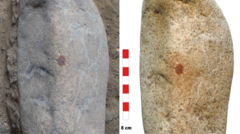In an intriguing revelation about our past, bedbugs may have been the first pests to adapt to urban living, with their connection to humans dating back approximately 245,000 years. A new study in the journal Biology Letters sheds light on this interspecies relationship, claiming that bedbugs deviated from their original prey—cave-dwelling bats—to feed on early humans, potentially Neanderthals.
Experts believe that this transition marked a significant evolutionary moment for bedbugs. Warren Booth, a professor specializing in urban entomology at Virginia Tech and the principal investigator of the study, explains that while bedbugs are commonly seen as a nuisance, their relationship with humans is exclusive—these insects do not seek sustenance from any other species. As such, once they formed this bond, their survival hinged entirely on human presence.
The research highlights how bedbug populations initially suffered during the nomadic phases of early human life but rebounded explosively approximately 13,000 years ago, coinciding with the advent of settled urban societies. The findings suggest that this relationship has been symbiotic yet skewed, with humans unwittingly fostering these persistent parasitic insects simply by sharing living environments.
Thus, the bedbug's long-standing association with humans serves as a testament to the intricate web of relationships that have shaped both pest and host behaviors throughout history.




















